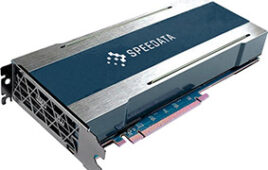New biodegradable compound facilitates bone regeneration in cases of substantial loss
Bones have a capacity to regenerate themselves after suffering partial damage. However, it is really quite another thing when a serious break or tumour lesion occurs and the loss of tissue is substantial. Today these cases are treated with various kinds of grafts, but they have a number of disadvantages, such as rejection, contamination or limitations on donors.
As a consequence, the current tendency in bone tissue engineering is developing materials that temporarily substitute for the bone while inducing its regeneration in such a way that this, temporary material, disappears as the bone recovers its space. Ms Beatriz Olalde, researcher at the Health Unit of Tecnalia, is working on the creation of one of these compounds. With the results obtained to date, she has presented her PhD thesis at the University of Basque Country (UPV/EHU), entitled, Development of a new porous, biodegradable nanocompound support for the regeneration of bone tissue.
The porous support or foam, developed by Ms Olalde and defended in her thesis, is totally new. The aim was to manufacture a biodegradable porous support which, while temporarily substituting for the damaged bone, would be capable of inducing a process of bone regeneration. With this in mind, a compound was developed which is capable of interacting – both chemically and electrically – with the bone cells or the adjoining bone tissue, thus accelerating bone recovery.
Polylactic acid, hydroxyapatite and carbon nanotubes
The basis of the composition of the porous support presented in the thesis is a polymer: polylactic acid, a material widely used in medicine and which, given its biodegradable properties, disappears as the bone grows. To this the researcher added a bioceramic – hydroxyapatite. Polymers have difficulties in attracting cells and so the function of hydroxyapatite, which provides calcium, is facilitating this integration of the support into the surrounding bone cells.
Finally, the compound also has carbon nanotubes. These enhance the mechanical properties of the polymers, which are limited in this aspect and would otherwise break up given bone resistance. Moreover, it is the carbon nanotubes that provide the electrical character to the porous support, as both the polylactic acid and the hydroxyapatite are insulating materials. In this manner, an electric field can be applied in such a way that the bone cells are directed to the porous support and the regeneration process is accelerated.
According to Ms Olalde in her thesis, the trials undertaken with the new porous support, involving both in vitro and in vivo experiments, gave satisfactory results. The foam proved to have optimum mechanical properties for supporting the bone well and, moreover, it does not break up once implanted. What is more, with the initial in vivo results, obtained 3 weeks alter being implanted in the porous support, bone growth was already observed. Also, after 16 weeks, this new bone showed mechanical, histomorphometric and densitometric properties similar to those of intact or healthy bone tissue.




